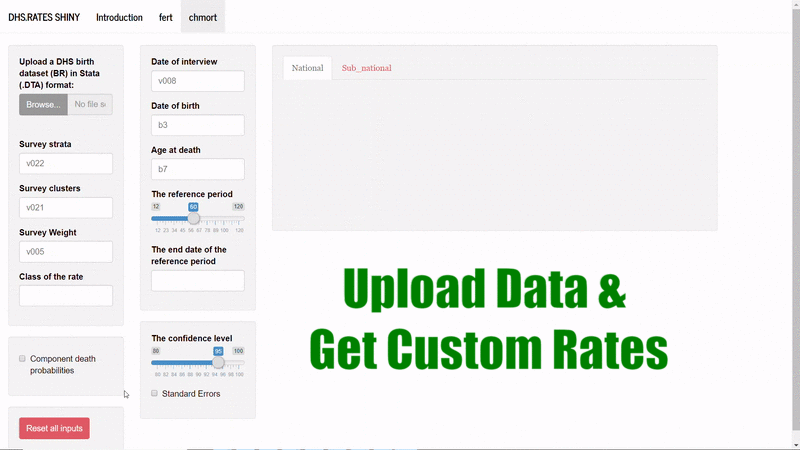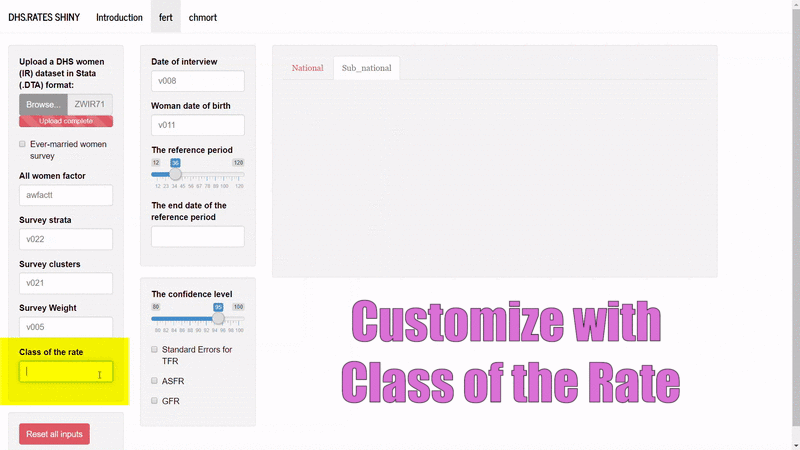Luminare: Customize Fertility and Childhood Mortality Rates with DHS.rates
This blog post is part of Luminare, our new blog series exploring innovative solutions to data collection, quality assurance, biomarker measurement, data use, and further analysis. This is the second post in the series that focuses on innovations using DHS.rates data.

Ever struggled to calculate fertility or child mortality indicators from survey data? Want to customize the reference period?
DHS.rates can do it for you!
What is DHS.rates?
The DHS.rates is a user-friendly R package to calculate fertility and childhood mortality rates based on DHS datasets. First released in March 2018, the current version of DHS.rates calculates the Total Fertility Rate, General Fertility Rate, Age-Specific Fertility Rates, Neonatal Mortality Rate, Post-Neonatal Mortality Rate, Infant Mortality Rate, Child Mortality Rate, Under-5 Mortality Rate and mortality probabilities. For each indicator, the package calculates standard error, design effect, relative standard error, and confidence intervals. Data users can customize rates:
- Using reference periods other than DHS standard reference periods
- Based on calendar years so the end of the reference period is not the date of the survey
- Using different sub-populations or domains other than those produced by The DHS Program
- Based on other surveys other than DHS if the required variables are available
This innovation was recently featured in PLOS One: Calculating fertility and childhood mortality rates from survey data using the DHS.rates R package
Download the DHS.rates package today!
Not an R user? Try the web-application, DHS.rates Shiny
This web-application provides all the DHS.rates functions without needing to download or use R. The DHS.rates Shiny web application includes two main tabs, fert and chmort. After uploading the relevant survey dataset, the application calculates fertility or childhood mortality rates according to the DHS methodology.

Just as with the R package, Shiny web application users can customize the reference period as well as the end date of the reference period. By adding a variable to “Class of the rate”, users can do the calculations for different subpopulations other than the ones produced by The DHS Program. Users also can change any of the fields on the screen allowing them to use the application with other surveys other than the DHS.



Thank you, Sir, for the informative blog